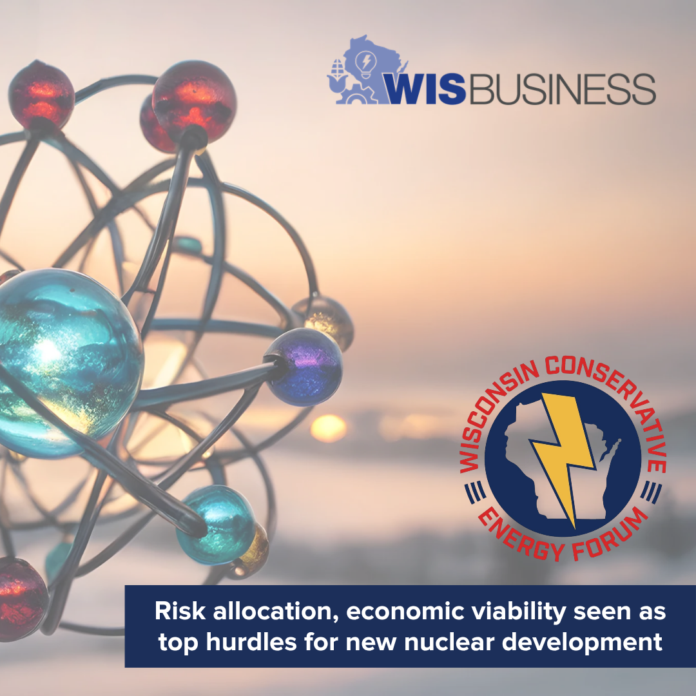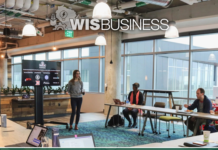Concerns around risk allocation and economic viability are the main hurdles to further nuclear energy development, according to a UW-Madison expert.
Prof. Paul Wilson, chair of the university’s Department of Nuclear Engineering & Engineering Physics, spoke yesterday during a policy event hosted by the Wisconsin Conservative Energy Forum at the state Capitol.
The discussion focused on the path ahead for nuclear energy, including new technologies being explored such as small modular reactors. These smaller nuclear installations have been floated as one solution to meet rising demand from energy-hungry data centers. But Wilson noted despite the hype, SMRs have yet to be created.
“We know we can do it … we’ve built upon things we’ve proved in the 50s, 60s and 70s, it wasn’t commercially viable then for a bunch of reasons, there’s been technology advancement, it’s maybe commercially viable now,” he said. “But it’s still, we need to demonstrate that we can actually do it. So that creates a huge risk mismatch.”
Wilson said he believes large utility companies “desperately” want to build more nuclear power, but “nobody wants to be first” or even second in line to move forward with a yet unproven concept. He suggested conventional electric utilities likely won’t be the ones to build the next nuclear power plants. He said the margin is too low, plus utility managers are too conservative and they operate in too competitive of an industry.
“And so it’s going to be big tech … it’s going to be those companies that have a very different risk tolerance, very different balance sheet, who are able to put money in the pot to absorb some of that risk and make it a more viable opportunity for all the players to spread that risk around,” he said. “And potentially some government risk-sharing as well.”
Chris Heck, senior manager of state government affairs for the Nuclear Energy Institute, argued more nuclear energy will be needed in the region to meet projected demand for MISO, the Midcontinent Independent System Operator whose grid network includes Wisconsin.
“MISO needs at least 16 gigawatts of new energy to meet the current low, low energy demand projections. A lot higher when you start adding in where AI can eventually go, right? Put that in perspective, Point Beach, about 1 gigawatt plus of electricity being produced,” he said yesterday, referring to the nuclear plant that makes up about 15% of the state’s annual net generation.
With that projected demand in mind, he argued “you have to build them” in order to keep energy affordable and reliable.
The need for more nuclear energy was echoed yesterday by Mike Huebsch, a former commissioner with the state Public Service Commission and state lawmaker. He now operates Huebsch Consulting Group in West Salem.
“I’ve obviously followed elections not only in Wisconsin but in the country for 30 years. I’ve never seen energy prices become the top political issue, and that’s exactly what’s happening all across the country,” he said. “Affordable energy is absolutely essential, it’s one of the things that nuclear can provide.”
Both he and Wilson emphasized that renewable energy sources have a place in the state’s energy mix. But Wilson explained the broader goal of decarbonizing the energy system can’t be done with renewables and energy storage alone.
“Eventually you hit a wall where you now have to start building five, six, eight times as much capacity to just meet the reliability that you get out of something like nuclear energy,” he said, adding “you need to have a mixture of energy sources to have a stable electricity grid, if we want the reliability we expect.”
Huebsch also noted Wisconsin is a net importer of energy, arguing that doesn’t have to be the case. He said “we’re not even close” to a national leader in nuclear with just one operating plant, while Illinois has 11.
“There are states that are well ahead of us, so we could build more here, we could do more here,” he said, adding “there’s going to be a remarkable demand over the next five, 10 years … We need to meet that with supply.”
Watch the video.






